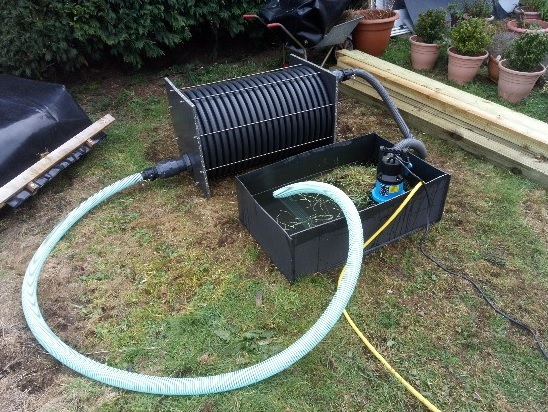Background
During previous trials in Malawi solids and trash mixed in the sludge caused serious problems with the desludging, with textiles and large solids blocking the pump and reservoir inlet and outlet. To prevent larger solids entering the pump and sludge reservoir and thereby protect the reservoir from damages from sharp objects a sludge screen is needed.
Work carried out in Phase 2
The Netherlands Red Cross began work to develop such a screen by contacting a number of suppliers of different sludge pumps for ideas. After consultation, SowTech designed and constructed a prototype of a mobile sludge screen. The screen is designed to be put at the inlet side of the pump to protect the pump itself. The size of the screen can be changed to allow small items to pass and prevent the screen from getting clocked too often. As the prototype of the screen cannot handle large pressures it could not be fitted on the pump outlet. A manual with all design parameters and detailed test protocol was delivered with the unit. The sludge screen, tested in conjunction with the reservoirs, was placed before a vacuum pump and used by WASTE to empty pit latrines in Blantyre, Malawi in March/April 2019.

How the screen works
To be updated.
Results
The screen was able to prevent rubbish from passing into the pump. Items that were caught by the screen included maize cobs, newspapers, condoms, plastics and pieces of cloth. As there was a lot of rubbish in the latrines desludged in this trial, screening 1,000 litres of sludge through the screen took about 20 minutes. Dismantling of the screen in the field can take 15 minutes while cleaning of the screen took an additional 30 minutes during the pilot. However, the manual shows it can be done easier, so it is expected that with more experience cleaning can be done much faster. The screen does increase the time to empty latrines. However, this eliminated the need to repair or unblock the pump, saving time overall and avoiding damage to the pump and reservoir.
How the screen works
Next Steps
Dismantling the whole screen requires much time and effort. There is a need to develop an easy way to open the unit and clean the screen more rapidly. A stronger version will also need to be developed so that it can also function at the outlet of a pump.